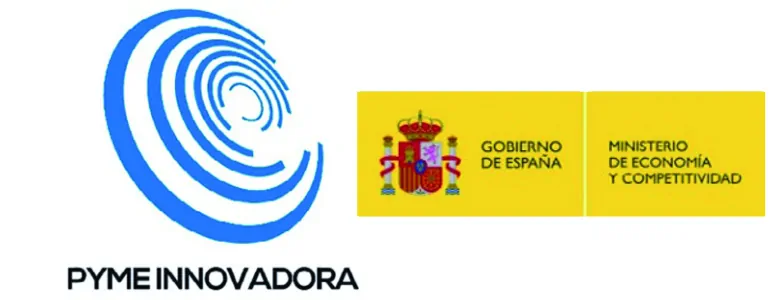
HORIZON EUROPE

 Europeo
Europeo
Specific Challenge:It is expected that, by 2035, our skies will go through a profound change. Where currently airspace is sparsely occupied by larger aircraft at higher altitudes and by small leisure and commercial aircraft closer to the ground, the rise of commercial & civil drone usage would lead to a much denser form of air traffic at VLL, with many more interactions between air traffic participants. This poses a considerable challenge from a traffic management point of view.
The challenge is to find a robust and interoperable technical solution that is suitable for the smallest of drones. Importantly, many of these drones are envisaged to operate autonomously. The solution will have to be lightweight, energy efficient, and allow for autonomous avoidance manoeuvres even on the smallest of drones.
Scope:In reference to the SJU Annual Work Programme 2016, this topics covers Section 3.5.3 (e) 2) topics a) to e) for long term aspects.
This project will answer the question: “How can drones best leverage a sensor suite of state-of-the-art electronic sensors and communication devices in order to make a safe, robust and interoperable...
ver más
Specific Challenge:It is expected that, by 2035, our skies will go through a profound change. Where currently airspace is sparsely occupied by larger aircraft at higher altitudes and by small leisure and commercial aircraft closer to the ground, the rise of commercial & civil drone usage would lead to a much denser form of air traffic at VLL, with many more interactions between air traffic participants. This poses a considerable challenge from a traffic management point of view.
The challenge is to find a robust and interoperable technical solution that is suitable for the smallest of drones. Importantly, many of these drones are envisaged to operate autonomously. The solution will have to be lightweight, energy efficient, and allow for autonomous avoidance manoeuvres even on the smallest of drones.
Scope:In reference to the SJU Annual Work Programme 2016, this topics covers Section 3.5.3 (e) 2) topics a) to e) for long term aspects.
This project will answer the question: “How can drones best leverage a sensor suite of state-of-the-art electronic sensors and communication devices in order to make a safe, robust and interoperable VLL UTM solution for e.g. detect-and-avoid that still fits on small drones?”
The mobile phone industry has spurred an unprecedented advance in the production of small electronics, which has resulted in a plethora of sensors, processors, and communication devices, including small cameras, tiny radars, structured light sensors, microphones, and small communication devices. It is possible that, by combining these sensors in the best way possible, a common solution to VLL UTM could be found.
For full robustness, the solution should involve both collaborative conflict resolution and, for where collaborative systems fail or are not present, non-collaborative conflict resolution. For non-collaborative conflict resolution, multiple sensors should be investigated and combined in a single, lightweight sensor and navigation package, in which sensor data-fusion leads to high robustness. It should also be investigated how this solution would perform in densely-populated areas, with drones flying in an urban environment or even indoors. Also, it will have to be investigated how the interaction should be shaped with a potentially very connected ‘Internet of Things’ environment.
The topic should research sensor selection, data fusion and supporting procedures to fully describe the proposed solution.
Expected Impact:There is expected to be a significant rise in the number of small drones operating in the VLL environment, which is largely uncontrolled but still used by manned aviation. Implementation of a sensor suite able to be carried by small drones and capable of avoiding other drones, manned aircraft and other obstacles would significantly assist the growth of the small-drone sector and enable its safe operation in all classes of airspace.
Cross-cutting Priorities:International cooperation
ver menos
Características del consorcio
 :
La ayuda es de ámbito europeo, puede aplicar a esta linea cualquier empresa que forme parte de la Comunidad Europea.
:
La ayuda es de ámbito europeo, puede aplicar a esta linea cualquier empresa que forme parte de la Comunidad Europea.
Características del Proyecto
Los costes de personal subvencionables cubren las horas de trabajo efectivo de las personas directamente dedicadas a la ejecución de la acción. Los propietarios de pequeñas y medianas empresas que no perciban salario y otras personas físicas que no perciban salario podrán imputar los costes de personal sobre la base de una escala de costes unitarios
Los otros costes directos se dividen en los siguientes apartados: Viajes, amortizaciones, equipamiento y otros bienes y servicios. Se financia la amortización de equipos, permitiendo incluir la amortización de equipos adquiridos antes del proyecto si se registra durante su ejecución. En el apartado de otros bienes y servicios se incluyen los diferentes bienes y servicios comprados por los beneficiarios a proveedores externos para poder llevar a cabo sus tareas
La subcontratación en ayudas europeas no debe tratarse del core de actividades de I+D del proyecto. El contratista debe ser seleccionado por el beneficiario de acuerdo con el principio de mejor relación calidad-precio bajo las condiciones de transparencia e igualdad (en ningún caso consistirá en solicitar menos de 3 ofertas). En el caso de entidades públicas, para la subcontratación se deberán de seguir las leyes que rijan en el país al que pertenezca el contratante
Características de la financiación
1. List of countries and applicable rules for funding: described in part A of the General Annexes of the General Work Programme and elaborated in the SJU Annual Work Programme 2016.
Note also that a number of non-EU/non-Associated Countries that are not automatically eligible for funding have made specific provisions for making funding available for their participants in Horizon 2020 projects. See the information in the Online Manual.
2. Eligibility and admissibility conditions: described in the SJU Annual Work Programme 2016 and part B of the General Annexes of the H2020 Work Programme.
3. Proposal page limits and layout: Please refer to Part B of the proposal template.
4. Evaluation
4.1 Evaluation criteria and procedure, scoring and threshold: the evaluation (award) criteria are described in the SJU Annual Work Programme 2016, while the procedure, scoring and thresholds are described in part H of the General Annexes of the General Work Programme.
4.2 Submission and evaluation process: Guide to the submission and evaluation process
5. Indicative timetable for evaluation and grant agreement:
Information on the outcome of single-stage evaluation: maximum 5 months from the deadline for submission.... Please read carefully all provisions below before the preparation of your application.
1. List of countries and applicable rules for funding: described in part A of the General Annexes of the General Work Programme and elaborated in the SJU Annual Work Programme 2016.
Note also that a number of non-EU/non-Associated Countries that are not automatically eligible for funding have made specific provisions for making funding available for their participants in Horizon 2020 projects. See the information in the Online Manual.
2. Eligibility and admissibility conditions: described in the SJU Annual Work Programme 2016 and part B of the General Annexes of the H2020 Work Programme.
3. Proposal page limits and layout: Please refer to Part B of the proposal template.
4. Evaluation
4.1 Evaluation criteria and procedure, scoring and threshold: the evaluation (award) criteria are described in the SJU Annual Work Programme 2016, while the procedure, scoring and thresholds are described in part H of the General Annexes of the General Work Programme.
4.2 Submission and evaluation process: Guide to the submission and evaluation process
5. Indicative timetable for evaluation and grant agreement:
Information on the outcome of single-stage evaluation: maximum 5 months from the deadline for submission.
Signature of grant agreements: maximum 8 months from the deadline for submission.
6. Provisions, proposal templates and evaluation forms:
Research and Innovation Action:
Specific provisions and funding rates
Self evaluation form
SJU Model Grant Agreement
H2020 Annotated Grant Agreement
Proposal templates are available after entering the submission tool below.
7. Additional provisions:
Classified information
Technology readiness levels (TRL) . Please also refer to the document SESAR ER RPAS Call Technical Description.
8. Open access must be granted to all scientific publications resulting from Horizon 2020 actions and proposals must refer to measures envisaged.
9. SJU additional documents
SESAR ER RPAS Call Technical Description
SJU Annual Work Programme 2016
European ATM Master Plan
Project Execution Guidelines for SESAR 2020 RPAS Exploratory Research
Horizon 2020 Rules for Participation
Horizon 2020 Regulation of Establishment
Horizon 2020 Specific Programme
Información adicional de la convocatoria
Otras ventajas
Ayudas Similares

| Abierta

| Próximamente

| Abierta

